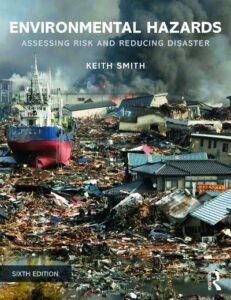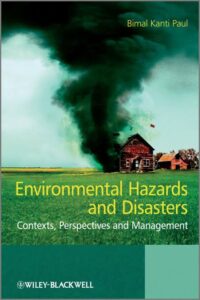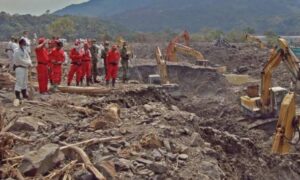Back to: Environmental Biology 300 Level
Welcome to class!
Natural and human-made disasters can disrupt lives, damage ecosystems, and slow down development. From floods in Lagos and desertification in the North, to oil spills in the Niger Delta and building collapses in urban centres, Nigeria has experienced many environmental hazards. Understanding disaster risk reduction (DRR) helps us prepare for, respond to, and recover from such hazards in a sustainable and responsible way.
Disaster Risk Reduction And Environmental Hazards
What Are Environmental Hazards?
Environmental hazards are natural or human-induced events that have the potential to cause harm to people, property, and the environment. They can be sudden, like earthquakes or floods, or slow-moving, like droughts and erosion.

Types of Environmental Hazards
Natural Hazards – These occur naturally without human interference. Examples include:
Floods (e.g. annual floods in states like Bayelsa and Benue)
Droughts (especially in Northern Nigeria)
Earthquakes (rare, but minor tremors have occurred in Abuja)
Erosion (notably in Anambra and Imo States)
Human-Induced Hazards – These result from human activities. Examples include:
Oil spills (Niger Delta communities like Ogoniland)
Gas flaring and air pollution
Industrial waste dumping
Building collapses due to poor construction practices
What is Disaster Risk Reduction (DRR)?
Disaster Risk Reduction involves strategies and actions aimed at preventing new risks, reducing existing ones, and strengthening resilience to environmental hazards. It is not just about emergency response, but about building a safer and more sustainable society.

Key Components of DRR
Risk Identification – Understanding the hazards, vulnerabilities, and exposure of people and environments.
Preparedness – Training communities, setting up early warning systems, and having emergency plans.
Mitigation – Taking steps to reduce the impact of disasters, like building flood defences or enforcing environmental regulations.
Response – Coordinated action during disasters to save lives and reduce damage.
Recovery – Rebuilding and restoring affected areas, while learning lessons to avoid future risks.
Examples of DRR in Nigeria
The Nigerian Meteorological Agency (NiMet) provides seasonal rainfall predictions and early warnings.
The National Emergency Management Agency (NEMA) and State Emergency Management Agencies (SEMAs) coordinate disaster responses.
Community-based early warning systems have been introduced in flood-prone areas like Lokoja.
NGOs like the Nigerian Red Cross provide training and emergency response in disaster-prone zones.
Public education campaigns are teaching families how to prepare for hazards like fire outbreaks and flooding.
The Role of Individuals and Communities
Everyone has a role in reducing disaster risks:

Avoid dumping refuse in drains to prevent urban flooding.
Follow building codes when constructing homes.
Join community disaster planning initiatives.
Educate others about climate-related risks and safe practices.
Summary
- Environmental hazards are natural or human-made events that can harm people and nature.
- Natural hazards include floods, droughts, erosion, and earthquakes.
- Human-induced hazards include oil spills, pollution, and poor construction.
- Disaster Risk Reduction (DRR) is about reducing and managing risks before, during, and after hazards occur.
- Key DRR strategies in Nigeria include early warning systems, education, emergency response, and community engagement.
Evaluation
- Define environmental hazards and give two examples each of natural and human-induced hazards.
- What is Disaster Risk Reduction, and why is it important?
- Describe three components of effective DRR.
- Mention two organisations involved in DRR in Nigeria and their functions.
- List three things individuals can do to reduce disaster risks in their communities.
You are doing a great job learning how to protect both people and the planet. Disaster preparedness is not just for emergencies—it’s for everyday responsibility and resilience. Afrilearn is proud of the steps you’re taking to become an informed and empowered environmental leader. Keep it up!
